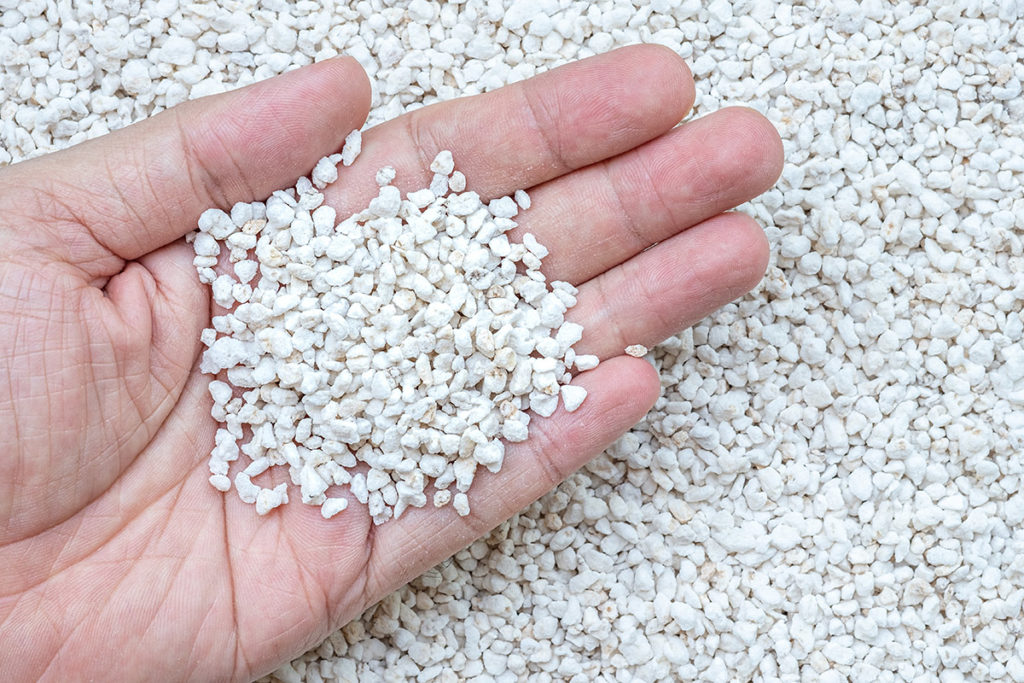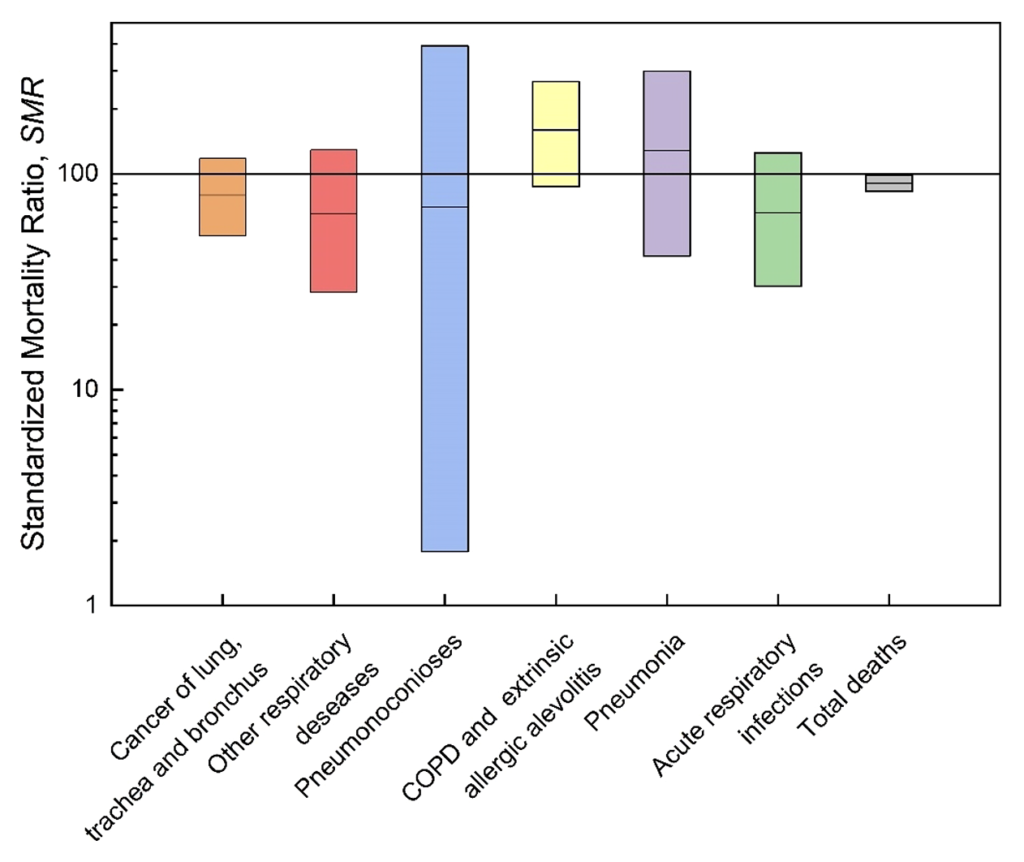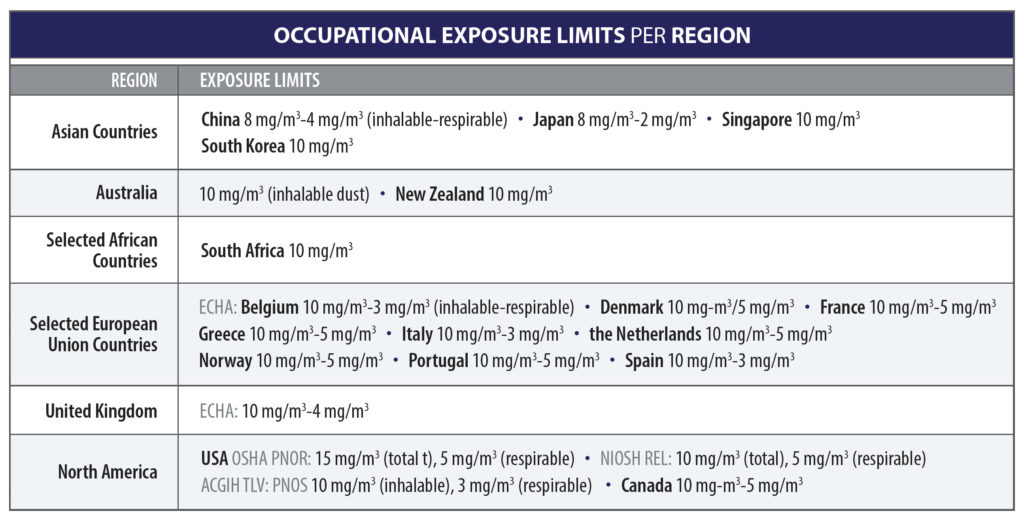A global overview of scientific research on the potential health effect of perlite
Executive Summary
For more than forty years, the perlite industry has been at the forefront of testing for health effects that may be associated with the production, processing and use of raw and expanded perlite. Initially, much of the industry research effort was sponsored by the Perlite Institute, an international trade association founded in 1949 by perlite mining and processing companies. Since then, perlite has been the subject of numerous health studies conducted by independent scientific and governmental research organizations as well as individual researchers. Significantly, no study to date has pointed to an inherent health risk posed by exposure to perlite, either through activities associated with the workplace or in environs surrounding places of mining.
Research Focus
Research into the potential health effects of exposure to raw and expanded perlite focus on the following areas:
- The determination of perlite exposure levels incurred by perlite installation professionals.
- Middle and long-term effects of perlite exposure to the respiratory system of workers at perlite production facilities.
- Assessing potential health effects for inhabitants of the areas adjacent to perlite mining facilities.
- Health effects of perlite ingestion and inhalation on various testing animals.
Main Conclusions
An extensive review of the available bibliographic and scientific record on the subject of the potential health effects of perlite concluded the following:
I. A considerable number of research projects have been conducted, having as scope the investigation of the health effects of perlite on different population groups, as well as on animals. The large number and wide range of the studies guarantee the validity and reliability of the scientific conclusions underpinning the perlite-related & relevant regulations & legislation globally.
II. Raw and expanded perlite is a fully natural, inert, inorganic material; it is considered only a “nuisance dust” by national legislations around the world.
III. Extensive scientific research has proven that no health effects are expected to occur associated with perlite mining, processing, expansion and application/installation, provided that the prescribed occupational exposure limits (OEL) and the prescribed means of personal protection are applied.

Perlite is not only fully natural, it is scientifically proven to be safe for workers, installers, those living adjacent to perlite mines, and when tested on animals at or below government-set occupational exposure limits.
Table 1 • Exposure limits for perlite dust in occupational settings for select countries or regions.
Introduction
The current document presents numerous international studies which investigate the potential health effects that may arise from exposure to & usage of perlite. We have reviewed eighteen studies published in prominent peer reviewed journals, international conferences and a workshop. In these studies, the potential health effects of perlite on different population groups and on animals were extensively and thoroughly investigated.
Occupational Exposure Limits
Perlite is a fully natural, inorganic and chemically inert material, with little to no crystalline silica content by volume. It is derived from naturally occurring volcanic rock which mainly consists of amorphous silica (i.e. volcanic glass). From a regulatory standpoint, perlite is regarded as a ‘‘nuisance dust”. The allowable occupational exposure limits for dust are based on an 8-hour total weighted average work day (8 TWA), and human exposure to any dust at levels significantly above the designated occupational exposure limit must be avoided. Table 1 lists country-or region-specific exposure limits for perlite dust levels in an occupational setting.
Health Effects on Perlite Industry Workers
Perlite miners, and people occupied at perlite production plants or in industries that use perlite, are the most likely to be exposed to the material. Those groups of workers are the first that have been investigated for potential health effects related to perlite exposure. The first comprehensive study, performed by Cooper in 1975, is a radiographic survey of 285 workers from 10 facilities (including mining and expansion operations) in western U.S. states, whose tenure ranged from 1 to 23 years[1]. The researcher was able to review chest X-rays from 240 of the workers and found no individuals having definitive evidence of pneumoconiosis in the cohort other than two workers with prior histories of working with diatomaceous earth (DE). Consequently, he concluded that the results support the position that perlite does not produce pneumoconiosis while cautioning that exposures should be kept at or below nuisance dust levels and to maintain medical surveillance. No data were available at the time on the respirable crystalline silica content of the ores. One year later, Cooper published the results of another study of 117 workers from three plants in the San Luis valley of northern New Mexico and southern Colorado, involving one expansion facility and two perlite mining operations, whose occupational tenure ranged from 1 to 23 years (average of 7.9 years)[2]. After clinical examination and a review of the X-ray films, he again did not find any changes indicative of pneumoconiosis. In 1980, Cooper summarized the conclusion of all aforementioned studies in a workshop organized by the U.S. Environmental Protection Agency (EPA) having as topic the substitution of asbestos[3]. Later in 1983, Cooper & Sargent examined chest X-rays from 152 workers who had been employed five or more years in perlite mining and processing. Nearly all of these workers were exposed to dust levels beneath the OEL, but some (those engaged in bagging of expanded perlite) were exposed to dust levels above the OEL. The authors concluded that the chest films of workers with over 5 years of employment gave no indication that any of them was developing pneumoconiosis[4]. The studies of Cooper have been reviewed by Elmes who also confirmed that prolonged perlite exposure produces little if any X-ray change or loss of lung function[5].
In a separate study, Maxim, Niebo and McConnell reviewed and published two unpublished works of H.Weill that were reported by Tulane University[6]. The studies were entitled “Summary Report on Perlite Worker Survey”. These were reported in 1990 and 1994, respectively, and presented the results of pulmonary function, respiratory symptoms and chest X-rays studies of workers exposed to perlite. The 1990 study included workers from plants in New Mexico, Colorado and an expanding facility in Illinois. After examination of pulmonary function of 132 workers, and analysis of the chest X-rays of 147 workers, Weill concluded that there was no evidence of pneumoconiosis, and noted that “the working population is healthy, from a respiratory standpoint, not exhibiting undue respiratory symptoms, and having, on average, normal lung function”. The 1994 study included seven perlite production plants and 89 workers with an average duration of 7 years with some exposed as long as 26 years. Weill concluded that “This survey provides substantial reassurance that the currently employed workforce has, to date, been free of any evidence of a silicosis risk, or, indeed, any measurable adverse respiratory effects of perlite exposure”.
Studies have also been conducted of workers occupationally exposed to perlite in plants in Turkey. One of the difficulties of evaluating studies of perlite workers in Turkey is the high percentage of smokers in the population. Cigarette smoking is associated with several adverse effects in the lungs including chronic inflammation typical of chronic bronchitis, structural damage as seen with emphysema, functional impairment resulting in obstructive lung disease, radiographic abnormalities including irregular opacities, and lung cancer[6]. For example, Polatli et al. studied 36 perlite exposed and 22 unexposed (office) workers at a perlite plant in Menderes near Izmir (activities not stated)[7]. All of the considered people were smokers, while dust levels exceeded the OEL, thus assessment of the likely health effect in a well-controlled workplace is impossible. The authors concluded that a 12 year perlite exposure period did not lead to a decrease in mean pulmonary function tests (PFTs) nor exhibit any correlation between PFTs and duration of work in perlite areas. Thus, once again no negative health effects of perlite exposure were identified despite dust exposure levels exceeding the officially prescribed OELs.
The above studies of workers occupationally exposed to both perlite ore and expanded perlite, including some that were exposed to perlite dust at levels well above the present Occupational Exposure Levels (OEL), provide strong evidence that the health effects of occupational exposure to perlite dust are minimal.
Studies of Populations Environmentally Exposed to Perlite
Two major scientific research studies investigated the long-term effect of perlite mining activities on the health of resident populations. First, Sampatakakis et al. conducted a mortality and morbidity study of the permanent resident population of the island of Milos, Greece[9]. The island has a long history of mining for various minerals including barite, bentonite, kaolin, manganese, obsidian, perlite, pozzolan, sulfur and zeolites, while mainly bentonite, perlite and pozzolan are mined. Deaths on Milos in total, and associated with acute respiratory infections, pneumonia, chronic obstructive pulmonary disease (COPD), pneumoconiosis, cancer of the lung, trachea, and bronchus, and other diseases of the respiratory system, over the period 1999–2009, were compared to deaths from these same causes in the Cyclades Prefecture (a former administrative prefecture of Greece in which the island of Milos was located); standard mortality ratios (SMRs) and associated confidence intervals were computed and are presented in Figure 2. Results of the mortality study of residents of Milos, Greece, did not reveal any significantly elevated SMRs, while total deaths related to respiratory issues are less in Milos than in the Cyclades Prefecture overall. An increased risk of developing diseases of the respiratory system, such as pneumonia, chronic obstructive pulmonary disease and allergic rhinitis was identified but was not statistically significant.
In another study, researchers evaluated the general health level of residents of Milos island through respiratory functional testing, and bone density measurement in correlation with occupational and environmental exposure[10]. After examination of 181 residents, the prevalence of the patients with chronic obstructive pulmonary disease (COPD) in Milos Island was found to be 5.5%. The majority of the study population (77.9%) was not exposed to perlite, bentonite, kaolin or asbestos. The researchers stated that “among the participants that reported occupational exposure we found no correlation between COPD presence and exposure to mineral dust”.
No correlation between pulmonary diseases and environmental exposure has been found in the mining areas of Milos in Greece. Normally, the degree of impact of mineral dust on the general health level of a population depends largely on the level of exposure.

Animal Tests
Several studies incorporating tests on animals have been performed to date. These were implemented in order to identify the health effects of perlite inhalation and ingestion under controllable conditions and predetermined dosages. The exposure conditions and major conclusions of these studies are presented below.
Mice and Rats. A single intratracheal instillation of a 75 mg/ml saline dose of perlite (18–30% quartz) to rats produced a ‘‘foreign body reaction’’ in white male rats, but no pulmonary fibrosis was observed ([11] cited in [12]). Ueda et al. infused intratracheally 5 mg of perlite dust in 5% alcohol to rats, and they observed that it did not result in a strong pulmonary fibrogenic reaction at 12 weeks after administration[13]. Ohkuma et al. and Itoh et al. performed acute toxicity studies in mice ([14], [15] in [16]). The results showed no acute toxicity despite large doses. The estimated median lethal dose (LD50) was 12,960 mg/kg or more in each case. Groups of male and female mice were given diets containing 0%, 1%, 10%, 20% perlite for 28 weeks[16]. Appearance, behavior, and food consumption of mice of treated groups were not affected during the experimental period.
Guinea Pigs. In an 18-month inhalation study, guinea pigs and rats were exposed to perlite dust at a concentration of 226 mg/m3[17] (cited in [1], [2], [4]). No pulmonary reaction, including fibrosis, was observed. The authors concluded that perlite acted as an inert or nuisance dust. Nine perlite products were tested in guinea pigs, by weekly intratracheal injection of 0.5 ml of a 5% perlite suspension in saline for 3 weeks. At 4 to 12 months after the last injection, no evidence of pulmonary fibrosis was shown. Guinea pig inhalation exposure of 284 mg/m3, 8 hours/day, 5.5 days/week for six months ‘‘appeared to stimulate the progression of experimental tuberculosis’’[18] (cited in [1]). When exposure ceased the tuberculosis infection progressed for about eight months and then began to heal and ultimately was arrested. It should be pointed out that the applied exposure level was roughly 30 times higher than the average OEL (Table 1).
The common conclusion among the studies investigating the potential health effects of perlite inhalation and ingestion on animals is that perlite is not toxic and does not cause pulmonary fibrosis.
BIBLIOGRAPHY
To download a .pdf of the Perlite, the Safe and Fully Natural Material brochure, click here.
If you have technical questions on this topic, please email the technical contacts listed on our contact page.
Copyright © 2021 Perlite Institute All Rights Reserved

